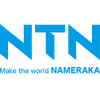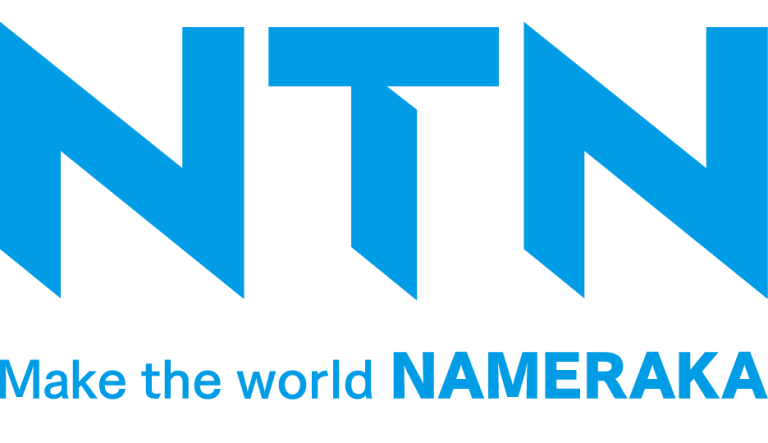Characteristics of tapered roller bearings

As the name suggests, tapered roller bearings are roller bearings, whereby the term tapered is inspired by the shape of the rollers. Tapered roller bearings are used, among other things, in construction or agricultural machinery, in vehicle construction, for example in wheel bearings, but also in general mechanical engineering.
In tapered roller bearings, the inner ring and outer ring as well as the rolling elements are arranged in such a way that they form an angle that intersects the shaft axis at the same point. This inclined arrangement produces an axial force and the rolling elements theoretically roll without sliding friction components. Tapered roller bearings offer an advantage atypical of roller bearings in general. These bearings can support a combination of radial and unilateral axial loads, although care must be taken to ensure that no purely axial load is applied to the bearing.

Because the contact angle of tapered roller bearings can be individually specified, the bearings can handle different radial-axial load combinations. Tapered roller bearings can support high loads and are usually used in pairs, in which case the bearing clearance or preload can be adjusted as required.
Compared to ball bearings, but also to cylindrical roller bearings, tapered roller bearings have lower limiting speeds, as additional friction occurs at the rib due to the design and use of a preload. In addition, tapered roller bearings require more lubrication than the other bearing types due to the high friction; therefore, elaborate oil lubrication is usually used. Furthermore, tapered roller bearings are characterised by complex and relatively expensive handling and mounting.
Without going into too much detail, it should be mentioned that for tapered roller bearings there are three different marking systems with different structures. In addition to the metric (Europe and Asia) and inch dimensions (USA), there is the J-series, which is a mix of the other two systems. In the metric system, tapered roller bearings can be identified by the bearing designation beginning with 3. In addition, as with other rolling bearing types, information follows on the width and diameter series as well as the bore diameter. The cages used in tapered roller bearings are mainly made of sheet steel, but plastic cages are also used, especially in small tapered roller bearings. These bearings are sometimes used in the automotive industry. Large tapered roller bearings, on the other hand, usually have brass cages.
| Bearing series | Pressed steel cage, roller-guided | Solid steel cage, roller-guided |
| 329…X | Up to 80 | From 84 |
| 329… | Up to 80 | From 84 |
| 320 X | Up to 64 | —– |
| 320… | Up to 68 (except 64) | 64, from 72 |
| 330… | All | —– |
| 331… | All | —– |
| 302… | Up to 52 | 56-64 |
| 322… | Up to 52, 60 | From 56 (except 60) |
| 332… | All | —– |
| 303… | 02-38 | From 40 |
| 303…D | Up to 24, 28 | 26, from 30 |
| 313…X | Up to 24, 28 | 26, from 30 |
| 323… | Up to 40 | 36, from 44 |
The cages used in tapered roller bearings are usually guided by the rolling elements.
Misalignment of tapered roller bearings
Another important question is to what extent tapered roller bearings can be subjected to misalignment, i.e. how much the angle between the bearing and the shaft or housing may deviate from a right angle. The allowable misalignment also depends on the bearing arrangement. Roller bearings are generally very sensitive to misalignment because the rolling elements are subjected to extreme loads at one point while the area at another point remains completely unloaded. In this context, the term “crowning” should be mentioned, which is understood to mean that the rolling element has a profiled surface in order to achieve a more balanced distribution of the force over its full length.
| Bearing arrangement | Maximum permissible misalignment |
| Single | 0.0005 rad (0°1’43”) |
| Back to back (X) arrangement | 0.0005 rad (0°1’43”) |
| Face to face (O) arrangement | 0.0010 rad (0°3’26”) |
Not bad: Bearings in the X arrangement (Face to Face) are suitable for the highest misalignments.
Crowning
Crowning means a modification of the rolling elements with the aim of minimising stresses in the edge area. There are various approaches for profiling the rolling elements, working with logarithmic functions, but also with several radii along the profile. In addition to the rolling elements, the raceways of the tapered roller bearings can potentially also be profiled.

Double row taper roller bearings
We will now take a look at two special types of tapered roller bearings. Just as with angular contact ball bearings, two tapered roller bearings can be paired with each other. In tapered roller bearings, double row bearings are not marked with a 3, but with a 4. The double-row bearings can support forces in both axial directions, with their rolling elements arranged in the O arrangement (back to back) or the X arrangement (face to face).

Four row taper roller bearings
Comparable to cylindrical roller bearings, there are also four-row tapered roller bearings. These have the bearing designation E and consist of two double-row inner rings and two double-row outer rings. Four-row bearings are mainly used in applications with extremely high loads, where a single-row bearing would have been overloaded long ago.

So you can see that tapered roller bearings have a number of advantages and are available in a wide variety of designs. If you want to learn more about other types of rolling bearings, you can also find out about needle roller bearings, cylindrical roller bearings or spherical roller bearings on bearingwizard.co.uk.
You may also be interested in
Bearing clearance, operating clearance and preload
Bearing clearance and operating clearance, isn’t that the same thing? And preload, I’ve heard that before, but what is that supposed to be?! How do
Lubrication
Nothing works without lubrication: Every bearing runs with grease or oil lubrication, which is the basic prerequisite for avoiding metallic contact of the bearing components,
O, X and tandem arrangement
If you have already read the articles on angular contact ball bearings or tapered roller bearings, you may already have come into contact with different
Point and line contact
What is meant by “point and line contact”? You may have already heard that rolling bearings can be split into two types. The classification depends
Rolling bearing types overview
If you have read our article on rolling bearing basics, you probably already know that rolling bearings can basically be divided into two types –
Structure and function
Components of rolling bearings The basics of rolling bearing technology include the structure and function of rolling bearings. To get you started slowly, you will




